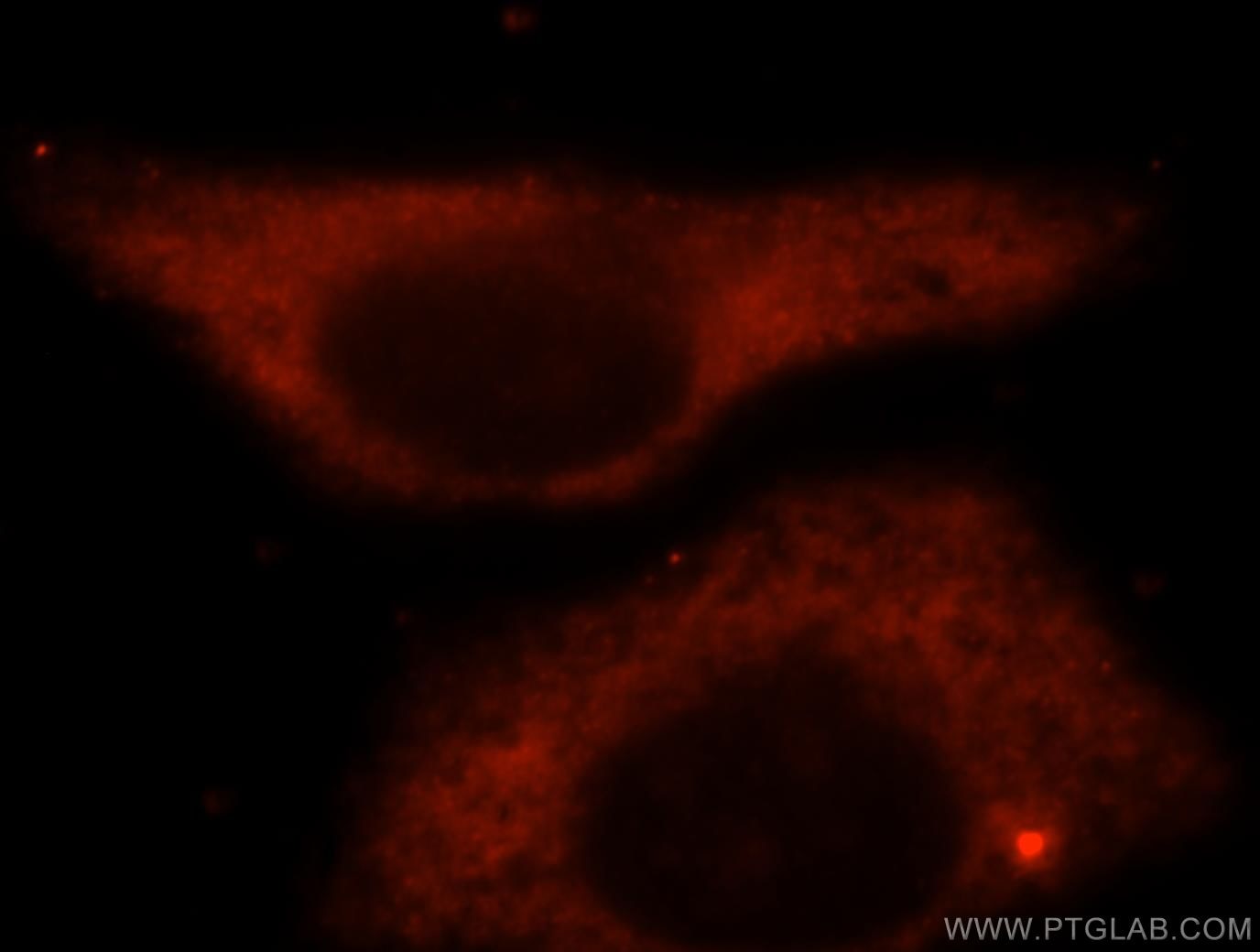Tested Applications
| Positive IF/ICC detected in | HepG2 cells |
Recommended dilution
| Application | Dilution |
|---|---|
| Immunofluorescence (IF)/ICC | IF/ICC : 1:10-1:100 |
| It is recommended that this reagent should be titrated in each testing system to obtain optimal results. | |
| Sample-dependent, Check data in validation data gallery. | |
Product Information
16148-1-AP targets BAG1L-specific in IF/ICC, ELISA applications and shows reactivity with human samples.
| Tested Reactivity | human |
| Host / Isotype | Rabbit / IgG |
| Class | Polyclonal |
| Type | Antibody |
| Immunogen |
Peptide Predict reactive species |
| Full Name | BCL2-associated athanogene |
| Calculated Molecular Weight | 39 kDa |
| GenBank Accession Number | NM_004323 |
| Gene Symbol | BAG1 |
| Gene ID (NCBI) | 573 |
| RRID | AB_2062440 |
| Conjugate | Unconjugated |
| Form | Liquid |
| Purification Method | Antigen affinity purification |
| UNIPROT ID | Q99933 |
| Storage Buffer | PBS with 0.02% sodium azide and 50% glycerol, pH 7.3. |
| Storage Conditions | Store at -20°C. Stable for one year after shipment. Aliquoting is unnecessary for -20oC storage. 20ul sizes contain 0.1% BSA. |
Background Information
BAG1 has been identified that modulates gene transcription through poorly defined mechanisms. Four isoforms of the BAG1 protein (BAG1S, BAG1, BAG1M, and BAG1L) can be produced from a common mRNA by use of alternative translation initiation sites, including a non-canonical CTG codon in one instance. The longest, BAG1L (Mr ~50K), contains a nuclear localization signal (NLS) and resides in the nucleus, whereas BAG1M (Mr ~46K) has an incomplete NLS and distributes mainly in cytosol, unless dragged into the nucleus through interactions with other. Distribution of BAG1S(p33) is not clear yet. This antibody can recognize BAG1L and BAG1V.
Protocols
| Product Specific Protocols | |
|---|---|
| IF protocol for BAG1L-specific antibody 16148-1-AP | Download protocol |
| Standard Protocols | |
|---|---|
| Click here to view our Standard Protocols |




